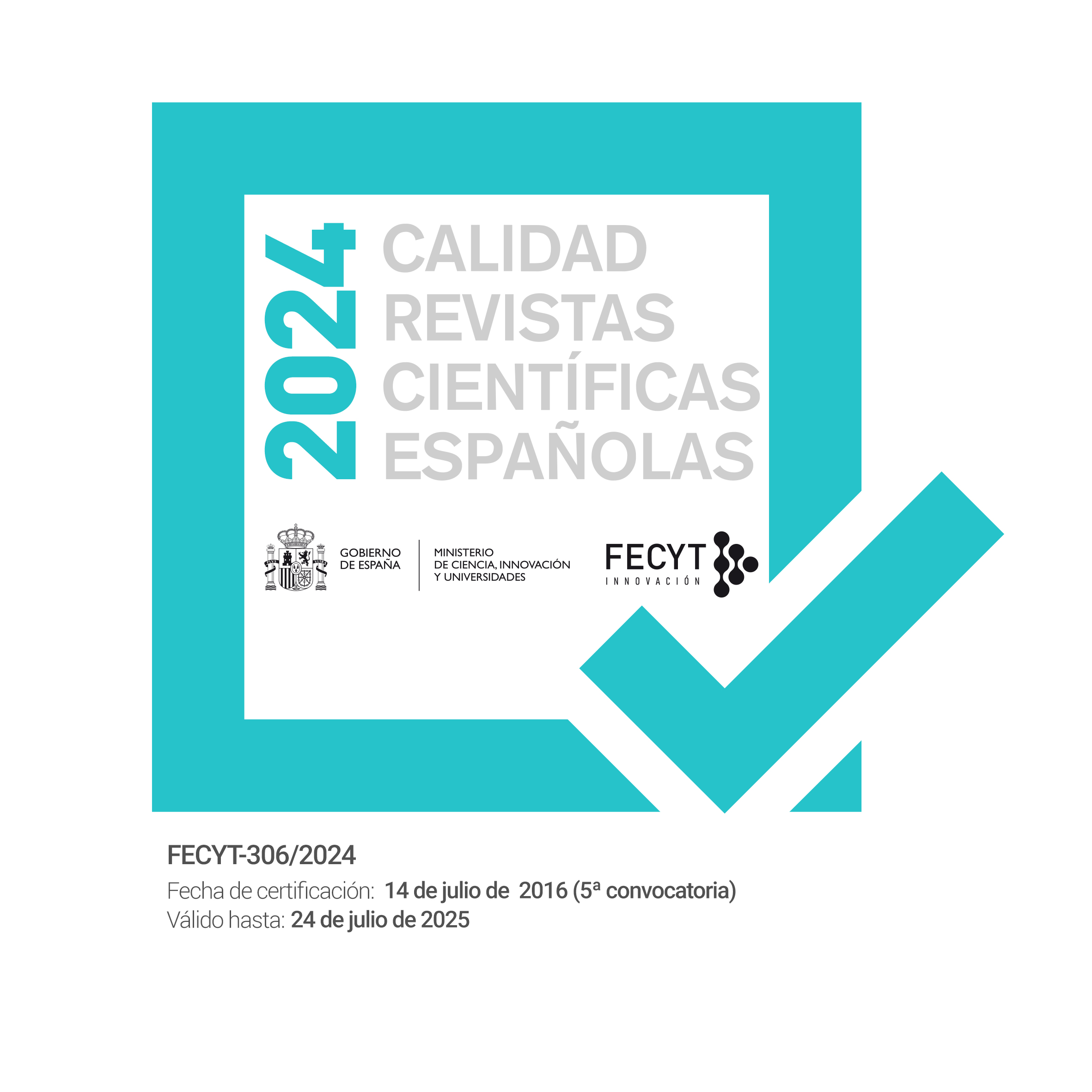The explanatory factor of sexual orientation in political and electoral behavior in Spain (2016-2021)
DOI:
https://doi.org/10.22325/fes/res.2022.135Keywords:
Sexual orientation, electoral participation, voting, ideological identification, SpainAbstract
Sociological research on the effects of sexual orientation on political behavior and electoral attitudes has been limited; in Spain, even non-existent. In this article, in the context of increasing analyzes of the importance of identity processes in voting, it is intended to analyze the impact of sexual orientation on three issues: 1) political participation, 2) ideology and 3) partisan identification of LGBA+ people (lesbian, gay, bisexual and other sexual orientations); and if there are significant differences with heterosexual individuals. Based on two surveys by the Spanish Sociological Research Center (2016 and 2021), the results confirm that LGBA + people participate more electorally, are positioned to the left of the ideological axis, and are more likely to vote for progressive parties. Accordingly, the present work highlights the importance of sexual orientation in social research and shows that these differences between heterosexual and non-heterosexual can be decisive in our electoral campaigns and political systems.
References
Abdelal, R., Herrera, Y. M., Johnston, A. I., & McDermott, R. (2006). Identity as a variable. Perspectives on Politics, 4(4), 695-711. https://doi.org/10.1017/S1537592706060440
Alford, J. R., Funk, C. L., & Hibbing, J. R. (2005). Are Political Orientations Genetically Transmitted?. The American Political Science Review, 99(2), 153-167. https://doi.org/doi:10.1017/S0003055405051579
Ansolabehere, S., & Puy, M.S. (2016). Identity voting. Public Choice, 169, 77-95. https://doi.org/10.1007/s11127-016-0371-2
Ayoub, P., & Garretson, J. (2017). Getting the Message Out: Media Context and Global Changes in Attitudes Toward Homosexuality. Comparative Political Studies, 50(8), 1055-1085. https://doi.org/10.1177/0010414016666836x
Bailey, R. W. (1999). Gay Politics, Urban Politics: Identity and Economics in the Urban Setting. Nueva York: Columbia University Press.
Bakker, R., Marks, G., Edwards, E., Polk, J., Hooghe, L., Rovny, J., Vachudova, M., & Steenbergen, M. (2015). Measuring party positions in Europe: The Chapel Hill Expert Survey Trend File, 1999-2010. Party Politics, 21(1), 143-152. https://doi.org/10.1177/1354068812462931
Bates, N., García Trejo, Y., & Vines, M. (2019a). Are Sexual Minorities Hard-to-Survey? Insights from the 2020 Census Barriers, Attitudes, and Motivators Study (CBAMS) Survey. Journal of Official Statistics, 35(4) 709-729. https://doi.org/10.2478/jos-2019-0030
Bates, N., Steinmetz, S., & Fischer, M. (2019). Special Issue on Measuring LGBT Populations (Preface). Journal of Official Statistics, 35(4), 699-707. https://doi.org/10.2478/jos-2019-0029
Berelson, B., Lazarsfeld, P. & McPhee, W. (1954). Voting: A Study of Opinion Formation in a Presidential Campaign. Chicago: University of Chicago Press.
Calvo, K. (2017). ¿Revolución o reforma?: la transformación de la identidad política del movimiento LGTB en España, 1970-2005. Madrid: Editorial CSIC (Consejo Superior de Investigaciones Científicas).
Clements, B. & Field, C. (2014). Public Opinion toward Homosexuality and Gay Rights in Great Britain. Public Opinion Quarterly, 78(2), 523-547. https://doi.org/10.1093/poq/nfu018
Cook, T. E. (1999). The Empirical Study of Lesbian, Gay, and Bisexual Politics: Assessing the First Wave of Research. The American Political Science Review, 93(3), 679-692. https://doi.org/10.2307/2585582
Egan, P. (2008). Explaining the Distinctiveness of Lesbians, Gays, and Bisexuals in American Politics. SSRN Electronic Journal. https://doi.org/10.2139/ssrn.1006223
Egan, P. (2020). Identity as Dependent Variable: How Americans Shift Their Identities to Align with Their Politics. American Journal of Political Science, 64(3), 699-716. https://doi.org/10.1111/ajps.12496
Fischer, M. (2016). Identifying same-sex couples in cross-national survey data: A comparison of same-sex couples’ demographic and socio-economic traits in six European countries. In Nederland in context: verschillen en overeenkomsten (pp. 50-79). DANS.
Garmendia, A., y León, S. (2020): ¿El fin del consenso territorial en España?. En A. Panadés (Dir.), Informe sobre la Democracia en España 2019 (pp. 25-49). Fundación Alternativas.
Garrido, A.; Martínez, M., y Mora, A. (2021): Polarización afectiva en España. Más Poder Local, (45), 21-40. https://www.maspoderlocal.com/index.php/mpl/article/view/polarizacion-afectiva-en-espana-mpl45
Grollman, E. (2017). Sexual orientation differences in attitudes about sexuality, race, and gender. Social Science Research, 61, 126-141. https://doi.org/10.1016/j.ssresearch.2016.05.002
Guntermann, E., & Beauvais, E. (2021): The Lesbian, Gay, and Bisexual Vote in a More Tolerant Canada. Working Paper. http://www.ericguntermann.com/research.html
Guasch, O., y Osborne, R. (2003). Sociología de la Sexualidad. Madrid: Centro de Investigaciones Sociológicas.
Hertzog, M. (1996). The Lavender Vote. Nueva York: New York University Press.
Hooghe, L.; Marks, G. & Wilson, C. (2002). Does Left/Right Structure Party Positions on European Integration?. Comparative Political Studies, 35 (8):965-989. https://doi.org/10.1177/001041402236310
Inglehart, R. (1990). Cultural shift in advanced industrial society. Princeton: Princeton University Press.
Justo, C. (2005): Sociología de la sexualidad. Política y Sociedad, 42, 273-275.
Lewis, G. B., & Gossett, C.W. (2008). Changing Public Opinion on Same-Sex Marriage: The Case of California. Politics & Policy, 36(1), 4-30. https://doi.org/10.1111/j.1747-1346.2007.00092.x
Lewis, G., Rogers, M., & Sherrill, K. (2011). Lesbian, Gay, and Bisexual Voters in the 2000 US Presidential Election. PMAP Publications, 7. https://scholarworks.gsu.edu/pmap_facpubs/7
Lipset, S. & Rokkan, S. (1967). Party Systems and Voter Alignments: Cross-National Perspectives. Nueva York: Free Press.
Long, J. & Mustillo, S. A. (2021). Using Predictions and Marginal Effects to Compare Groups in Regression Models for Binary Outcomes. Sociological Methods & Research, 50(3), 1284-1320. https://doi.org/10.1177/0049124118799374
Magni, G. (2020). Elections and the Role of LGBT Issues in the United States and Abroad. Oxford Research Encyclopedia of Politics. https://doi.org/10.1093/acrefore/9780190228637.013.1210
Miller, L. (2020). Polarización en España: más divididos por ideología e identidad que por políticas públicas. Informe ESADE ECPOL, Center for Economic Policy & Political Economy.
Michelson, M., & Schmitt, E. (2020). Party Politics and LGBT Issues in the United States. Oxford Research Encyclopedia of Politics. https://doi.org/10.1093/acrefore/9780190228637.013.1208
Niemi, R., & Jennings, M. (1991). Issues and Inheritance in the Formation of Party Identification. American Journal of Political Science, 35(4), 970-988. https://doi.org/10.2307/2111502
Organización para la Cooperación y el Desarrollo Económicos [OECD]. (2019). Society at a Glance 2019: OECD Social Indicators, A Spotlight on LGBT People. OECD Publishing, Paris. https://doi.org/10.1787/soc_glance-2019-en.
Orriols, L., & Cordero, G. (2016). The Breakdown of the Spanish Two-Party System: The Upsurge of Podemos and Ciudadanos in the 2015 General Election. South European Society and Politics, 21(4), 469-492. https://doi.org/10.1080/13608746.2016.1198454
Perrella, A., Brown, S., & Kay, B. (2012). Voting Behaviour among the Gay, Lesbian, Bisexual and Transgendered Electorate. Canadian Journal of Political Science, 45(1), 89-117. https://doi.org/10.1017/S000842391100093X
Perrella, A., Brown, S., & Kay, B. (2019). Profile of the Lesbian, Gay, and Bisexual Electorate in Canada. En M. Tremblay, Queering Representation: LGBTQ People and Electoral Politics in Canada (pp. 51-79). Vancouver: UBC Press.
Ramírez-Dueñas, J. M. (2022). Devolviendo la visibilidad a los invisibles. Preguntando la orientación sexual en las encuestas de opinión pública en España. Estudios LGBTIQ+, Comunicación y Cultura, 2(1), 117-128. https://doi.org/10.5209/eslg.79620
Rayside, D. (1998). On the Fringe: Gay and Lesbians in Politics. Ithaca: Cornell University Press.
Reynolds, A. (2013). Representation and Rights: The Impact of LGBT Legislators in Comparative Perspective. American Political Science Review, 107(2), 259-274. https://doi.org/10.1017/S1537592706060440
Rimmermans, C., Wald, K., & Wilcox, C. (2000). The Politics of Gay Rights. Chicago: University of Chicago Press.
Rojo, J. M. (2021): Identidad territorial y polarización afectiva en España: una propuesta de análisis. Revista Más Poder Local, (45), 95-109. https://www.maspoderlocal.com/index.php/mpl/article/view/identidad-territorial-polarizacion-afectiva-mpl45
Rollins, J., & Hirsch, H. N. (2003). Sexual Identities and Political Engagements: A Queer Survey. Social Politics: International Studies in Gender, State & Society, 10(3), 290-313. https://doi.org/10.1093/sp/jxg017
Schnabel, L. (2018). Sexual Orientation and Social Attitudes. Socius. https://doi.org/10.1177/2378023118769550
Siegel, S. & Wang, Y. (2018). Broken rainbows: The partisan politics of marriage equality in Europe. European Politics and Society, 19(4), 377-395. https://doi.org/10.1080/23745118.2018.1429195
Swank, E. (2018): Who Voted for Hillary Clinton? Sexual Identities, Gender, and Family Influences. Journal of GLBT Family Studies, 18(1-2), 21-42. https://doi.org/10.1080/1550428X.2017.1421335
Swank, E. (2019). Sexual Identities and Racial Attitudes among Black, Latins, and White Individuals. Journal of Bisexuality, 19(3), 305-336. https://doi.org/10.1080/15299716.2019.1630186
Swank, E. & Fahs, B. (2011). Pathways to political activism among Americans who have same-sex sexual contact. Sexuality Research & Social Policy, 8(2), 126-138. https://doi.org/10.1007/s13178-011-0034-5
Swank, E. & Fahs, B. (2017). College Students, Sexualities Identities, and Participation in Political Marches. Sex Res Soc Policy m,14, 122–132. https://doi.org/10.1007/s13178-016-0242-0
Swank, E., & Fahs, B. (2019) Explaining the Sexuality Gap in Protest Participation, Journal of Homosexuality, 66(3), 324-348. https://doi.org/10.1080/00918369.2017.1406210
Turnbull-Dugarte, S. (2020a). The European lavender vote: Sexuality, ideology and vote choice in Western Europe. European Journal of Political Research, 59(3), 517-537. https://doi.org/10.1111/1475-6765.12366
Turnbull-Dugarte, S. (2020b). Multidimensional issue preferences of the European lavender vote. Journal of European Public Policy, 28(11), 1827-1848. https://doi.org/10.1080/13501763.2020.1804987
Vidal, G. (2018) Challenging business as usual? The rise of new parties in Spain in times of crisis. West European Politics, 41(2), 261-286. https://doi.org/10.1080/01402382.2017.1376272
Published
How to Cite
Issue
Section
License
Copyright (c) 2022 José María Ramírez Dueñas

This work is licensed under a Creative Commons Attribution-NonCommercial 4.0 International License.
• The transfer of the copyright of the article to Revista Española de Sociología.
• The assignment to the Revista Española de Sociología of the rights of commercial exploitation of the article to third parties both in the offset and digital formats, as well as to the search engines and platforms that may serve as intermediaries for the sale or knowledge of the article.




